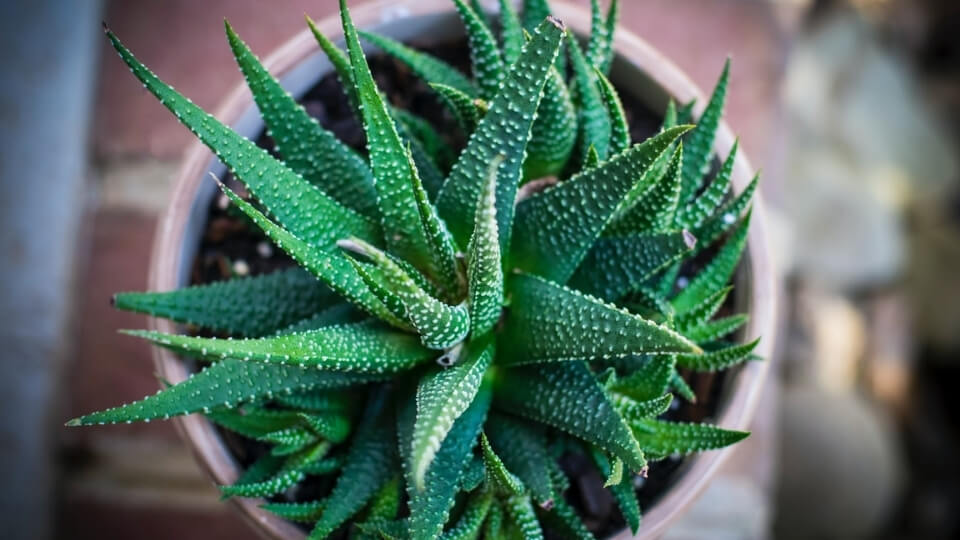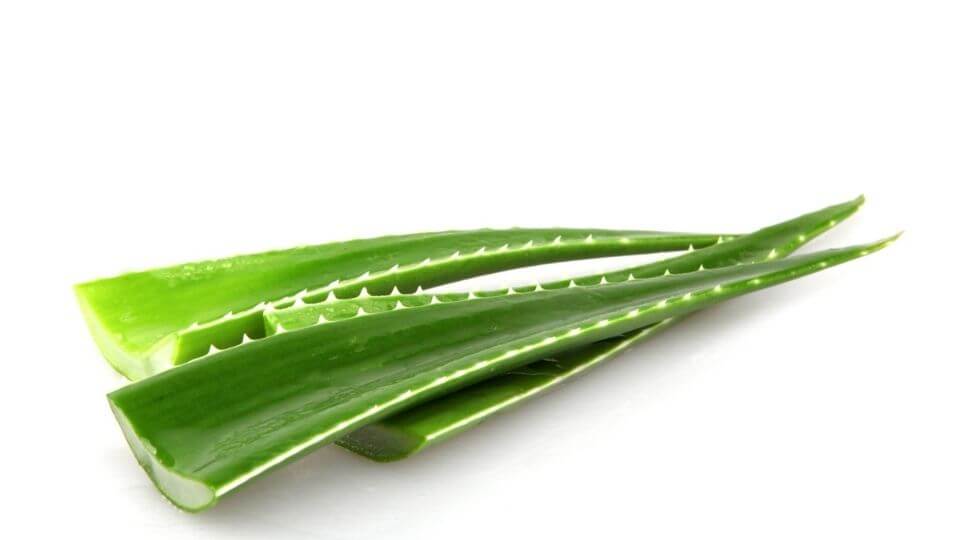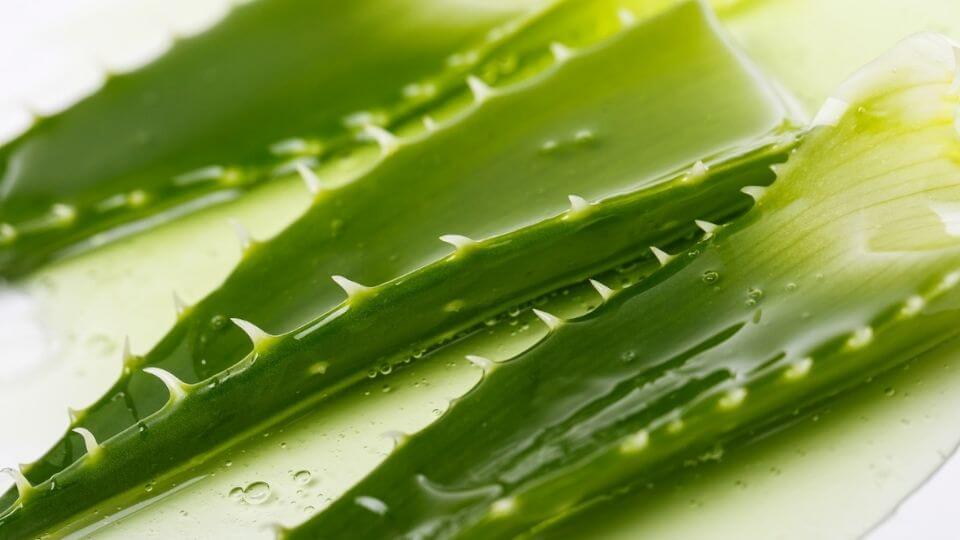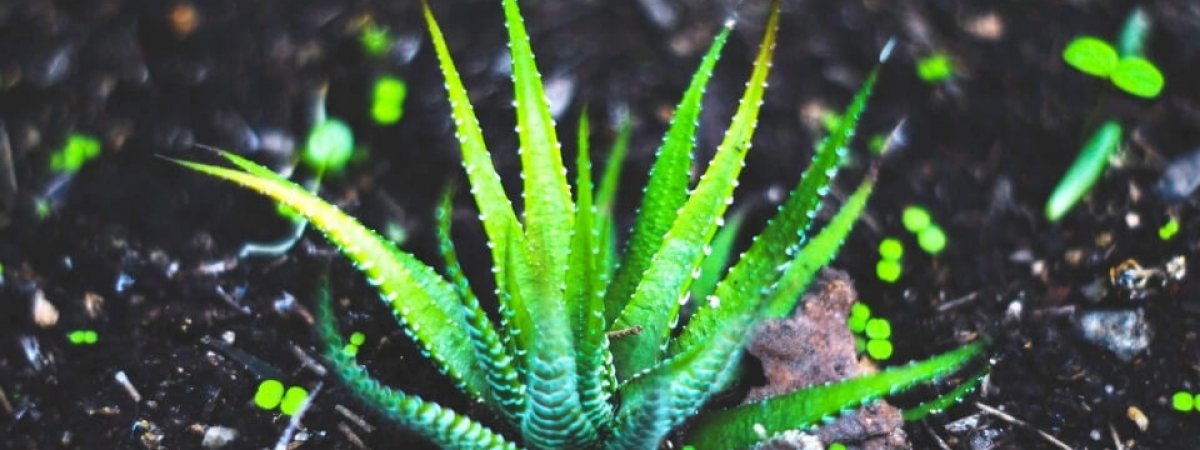Aloe Vera is a popular houseplant that is found in the forms of more than 300 species, the Aloe barbadensis being the most grown in homes. What makes it get greater abundance among houses is the gel extracted from its leaves.
Aloe vera gel is used to soothe the skin, but not necessarily suits everyone. The thick, succulent leaves of the houseplant contain the watery gel. The aloe leaves grow from the plant base like a rosette and boast their flexible spines and jagged edges.
You will see spiky flowers growing on the tall stalks, in different shades like orange, yellow and red. However, it is rare seeing flowers in younger plants and when grown as a houseplant, aloe may take several years to produce flowers.
How to grow aloe vera?

Things to consider before planting aloe vera
- Pick a container/pot made of terracotta or any porous material as it allows the soil to dry out completely between waterings. It also adds weight, so the plant doesn’t tip over.
- If you prefer using a plastic container for growing aloe vera, know that it will hold moisture for a longer period. So, make sure your aloe container has at least one drainage hole to let out moisture (this applies to all types of containers).
- Despite being a hardy houseplant, improper drainage can lead to rot and wilting of aloe vera plants. The ultimate effect is the death of the houseplant – the last thing you would want as a gardener or plant lover!
- Talking about the width of your container, it should have equal depth and width. If your aloe plant comes with a stem, pick a container that is enough deep to hold the entire stem under the soil.
- The succulent aloe plants prefer a well-draining potting mix to thrive, same as cacti and other succulents. Never choose gardening soil. We always suggest using a good mix of perlite, chunks of bark, lava rock, or all three.
- You need not necessarily add a layer of clay balls, gravel, or any kind of drainage substance to the base of the pot. It will only take up space that could otherwise be used by the roots to grow.
- To promote the aloe vera plant to produce new roots post-planting, use rooting hormone powder to dust its stem. You can find rooting hormones in a local nursery, online, or garden center.
Planting aloe vera
- Once you have picked the right pot/container for growing aloe vera, wash it well and leave it to dry completely. Place a small screen or transparent paper on the drainage hole (just big enough to cover the hole) to contain the soil inside the pot throughout.
- You may also use a doubled-up newspaper or paper towel, but these could break off eventually.
- If you are potting a fresh plantling, start by filling one-third of the pot with a well-draining potting mix.
- Place the plant in the soil. Fill the pot with soil, keeping in mind to leave a minimum space of ¾ of an inch between the top of the soil and your pot’s rim.
- Do not water your aloe vera after planting.
- When repotting aloe vera, brush away the extra dirt on the roots after you remove the plant from the current pot. Make sure you do not damage the roots in the process.
- For an aloe plant with pups, it must be removed right away before repotting it.
- In a case of a very long and spindly stem, you need to trim it partially to ensure it fits well in the pot (be careful while doing so as it may even kill your plant).
- To trim, cut off a section of the stem, leaving maximum on the plant. After some days you will see a callous forming on the would, this is when you should continue repotting aloe vera by following the steps of planting mentioned above.
- Once you have planted aloe vera, do not water for at least a week. This minimizes the chances of rot and provides the houseplant wit adequate time to produce new roots.
- Keep it in a warm place with indirect, right sunlight until it looks well-rooted.
Note: You must repot your aloe vera plant if it becomes leggy and too large.
Taking care of aloe vera

Light: Place the plant in indirect, bright sunlight. Sometimes, artificial light also works for aloe growth. For sufficient light to reach the plant, keep it in by a western or southern window in your house. Aloe kept in insufficient or low light grows leggy.
Temperature: The ideal temperature range for growing aloe vera is 55-80°F. Most apartments and homes stand by the temperature level. In the months from May to September, you can move the plant outdoors.
However, ensure to get it back inside as it gets cold at night.
Fertilizer: Fertilize aloe vera once a month, and only in the summer and spring months, you can use a balanced houseplant formula combined at ½ strength.
Watering aloe vera
Watering is an essential part of ensuring the healthy growth of your aloe vera plant. Here are a few things to keep in mind while watering aloe vera:
- Water aloe vera plants deeply, but not so frequently. The soil should be moist on watering. Make sure the soil dries out at least partially, by the next watering.
- If you overwater the plant, the roots may rot and wilt.
- To make sure the soil is not overwatered, the top third portion of the potting soil should dry out completely between waterings.
- If the plant is dug 6 inches into the potting soil, two inches from the top must dry out before you water it again. You can use your fingers to check the wetness of the potting soil.
- The ideal duration of watering your aloe vera plant is every 2-3 weeks in the summer and spring season. During fall and winter, water them sparingly.
- Double the watering duration for the aloe vera plant during fall and winter. Suppose you watered the plant every 2 weeks in summer and spring, make it 4 weeks during fall and winter season.
- You will see excess water sitting at the bottom of the aloe vera pot. Let it be for 10-15 minutes to allow the soil to absorb as much water as possible. Dump the remaining water to prevent overwatering.
Removing and replanting aloe vera pups
- Often mature plant of aloe vera produces offsets called pups, plantlets or ‘babies’. You can remove these to grow a whole new aloe plant. Technically, a clone of the mother plant.
- Find the location from were the offsets grow on the mother plant. Remove them with help of pruning shears, a sharp knife or scissors. On the offset, leave behind at least an inch of stem.
- Allow the offsets to look out from the soil for some days to develop a callous over the wound. This helps in protecting it from rot. Place the offsets in a warm location receiving indirect light.
- As soon as the offsets develop callouses, pot them in a succulent potting mix, ensuring to use well-draining soil.
- Place the potted aloe vera plant in a bright, sunny location. Water it after a week.

Getting aloe vera to flower
Mature aloe vera may occasionally bear a tall flower stalk called an inflorescence. From this stalk develops dozens of yellow or red flowers tubular in shape. It adds to the beauty of your houseplant.
However, it is rare to achieve blossoms on aloes that are grown as a houseplant because it demands ideal growing conditions, such as an adequate amount of water, plenty of light, and optimum temperature conditions.
If you wish to give your aloe planta shot at flowering, here are a few things to take care of:
Provide it with sufficient light: ensure your aloe vera plant receives plenty of light, specifically during summer and spring. You can keep the plant outdoors under full sun in summer when the temperature crosses 70-degree Fahrenheit. When the temperature falls at night, move the plant back indoors.
Provide the plant with an adequate amount of water: water the plant enough to not let it dry entirely. However, never overwater it! When you place the plant outdoors, do not let it soak consistently in summer rains.
Allow the plant have a proper dormancy period during winter and fall: Mostly aloe blooms in early spring and late winter. So, you have to give it enough time to rest with less regular watering and cold temperatures, which promotes flowering.
Don’t panic if it doesn’t flower: At times, despite all the efforts, the indoor conditions prevent forming an ideal environment for the aloe vera plant to flower.
Note: Do not move the growing aloe vera straight away to the full sun outdoors. It requires time to adjust to the intense sunlight or it may burn. Allow the plant to sit in partial sunlight for around a week before moving it to full sun.
Common issues while growing aloe vera and how to resolve

The main problems beginners face while growing aloe vera are due to unintended overwatering or inadequate light conditions.
Check out these common problems you might face which are important to understand while learning how to grow aloe vera indoors:
Mushy stem: It is a condition when the stem turns entirely mushy due to overwatering. Eventually, it starts rotting at the base. To get away with the issue, cut the stem right above the rotted portion and root it again.
Do not leave any rotted portion while trimming off the stem or it will continue to rot.
Brown mushy leaves: You must regularly check for a firm and healthy stem before looking for a brown and mushy leaf. In case you find one, trim it off at the section where it connects to the stem. After doing so, slow down the watering sessions.
Dried brown leaves: If the leaves look like they are shrivelling up and drying out, you may have underwatered your houseplant (yes, this is possible!). You can trim off the dry leaves as well.
Brown leaf tips: often brown leaf tips is a result of underwatering aloe vera plant, but it could also be sun scorch. In the case of thin leaves, you can get away with this issue by watering them more frequently.
Aloe plant grows very tall and thin: If this is the case with your aloe plant, know that you might have failed to provide your houseplant with enough sunlight. Move it to a window receiving good sunlight for better exposure.
In a Nutshell
Growing aloe vera is an easy process that needs a bit of attention when it comes to balancing the ideal conditions for a firm and healthy growth; otherwise, they love negligence! You know your aloe vera plant is healthy if it has firm and thick leaves standing tall.
While understanding how to grow aloe vera, also know that the leaves should be blueish-green to confirm healthy growth. As soon as you get the knack of these little techniques, you are ready to start growing your houseplant.
Let us know how it goes for you!







One thought on “How to Grow Aloe Vera?”
You should explain what you mean by “leggy”, I have never heard that term used for a plant.